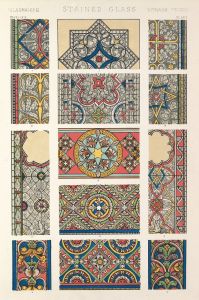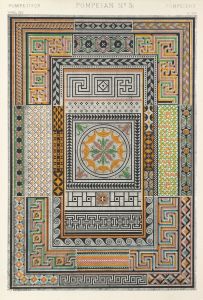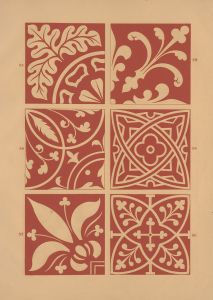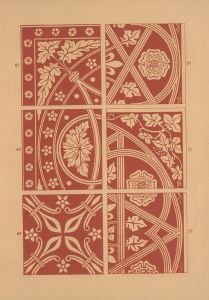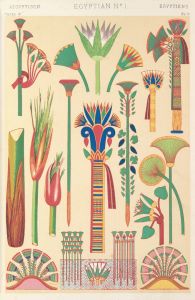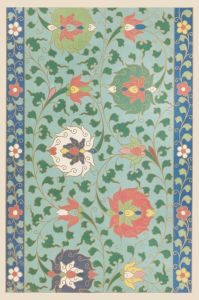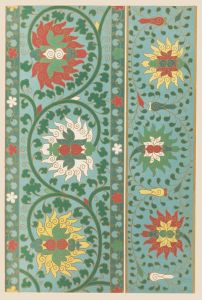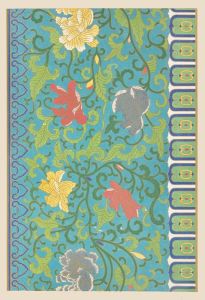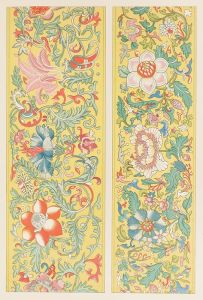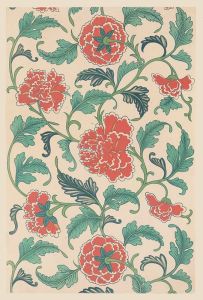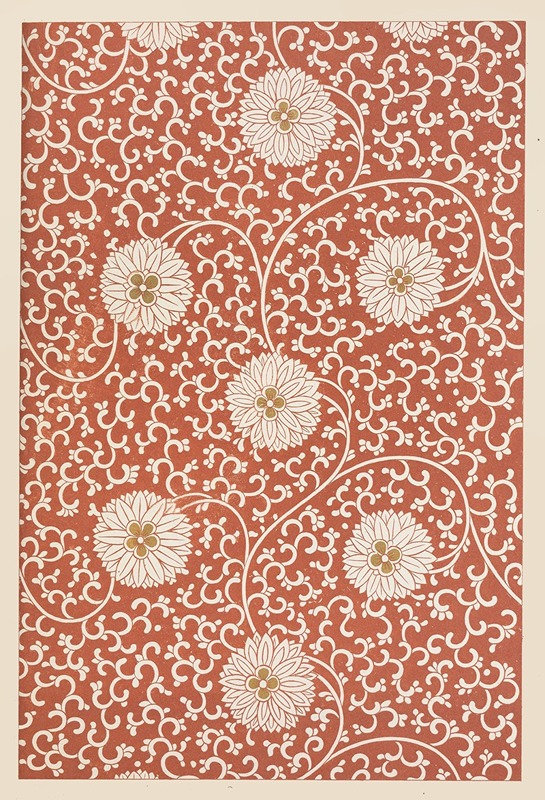
Examples of Chinese ornament, Pl.37
A hand-painted replica of Owen Jones’s masterpiece Examples of Chinese ornament, Pl.37, meticulously crafted by professional artists to capture the true essence of the original. Each piece is created with museum-quality canvas and rare mineral pigments, carefully painted by experienced artists with delicate brushstrokes and rich, layered colors to perfectly recreate the texture of the original artwork. Unlike machine-printed reproductions, this hand-painted version brings the painting to life, infused with the artist’s emotions and skill in every stroke. Whether for personal collection or home decoration, it instantly elevates the artistic atmosphere of any space.
"Examples of Chinese Ornament, Pl.37" is a plate from the influential design book "The Grammar of Ornament," authored by Owen Jones and first published in 1856. Owen Jones was a British architect and designer known for his work in color theory and ornamental design. His book aimed to provide a comprehensive guide to the decorative arts from various cultures around the world, and it became a seminal work in the field of design.
"The Grammar of Ornament" consists of 100 color plates, each showcasing different styles of ornamentation from diverse cultures, including Egyptian, Persian, Greek, Roman, Indian, and Chinese, among others. Plate 37 specifically focuses on Chinese ornamentation, reflecting the rich artistic traditions of China. The plate is part of a broader effort by Jones to document and celebrate the aesthetic principles of different cultures, emphasizing the importance of understanding and appreciating the diversity of design.
Jones was particularly interested in the use of color and form in Chinese art, which he believed demonstrated a sophisticated understanding of harmony and balance. Chinese ornamentation often features intricate patterns, symbolic motifs, and a strong use of color, all of which are evident in Plate 37. The designs typically include floral patterns, geometric shapes, and sometimes depictions of mythical creatures, all of which are characteristic of traditional Chinese decorative arts.
In creating "The Grammar of Ornament," Jones employed the latest printing technology of his time, chromolithography, to reproduce the vibrant colors and intricate details of the original designs. This technology allowed for a more accurate representation of the colors and patterns, which was crucial for a book that aimed to serve as a visual reference for designers and architects.
Jones's work was part of a broader 19th-century movement in Europe that sought to study and incorporate elements of non-Western art and design into Western practices. This movement was influenced by increased global exploration and trade, which brought greater exposure to the artistic traditions of Asia, Africa, and the Middle East. "The Grammar of Ornament" thus served as both an educational resource and a source of inspiration for designers looking to incorporate diverse influences into their work.
The influence of "The Grammar of Ornament" extended beyond its immediate impact on design and architecture. It played a role in shaping the Arts and Crafts Movement, which emphasized traditional craftsmanship and the inherent beauty of natural materials and forms. The book's emphasis on the aesthetic principles underlying different styles of ornamentation encouraged a more thoughtful and informed approach to design.
In summary, "Examples of Chinese Ornament, Pl.37" by Owen Jones is a significant representation of Chinese decorative art within a landmark publication that sought to document and celebrate the diversity of global design traditions. Through his meticulous documentation and innovative use of color printing, Jones provided a valuable resource that continues to influence the fields of design and art history.





